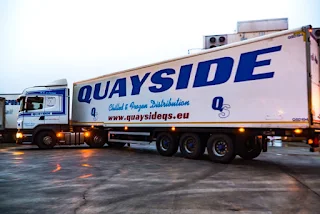The smart money is on fish like hake...
from the netter, Ajax...
or maybe big flatfish like this turbot...
or some sweet succulent squid...
ravishing ray...
wonderful witches...
luscious ling...
positively potent plus-fours...
more than enough to keep the buyers busy...
though there were just a few mackerel and sardines in the big fridge this morning...
to go with these lovely lemons...
delicious Dory...
wholesome haddock...
or marvellous megrim soles...
delicious Dovers...
meaty mini-monk tails
before they are all stacked up...
and whisked away...
the St Georges anded her fish directly to the market...
the final stage is nearing completion...
though most of the fleet are now safely tied up in the harbour...
along with a visitor, the ex-French now Irish trawler re-named, Northern Osprey from Annalong...
major refit underway in Penzance dock for this classic crabber...
the Scillonian III, laying inside the Gry Maritha is now looking very spruce after her annual refit in the Dry Dock.

























































